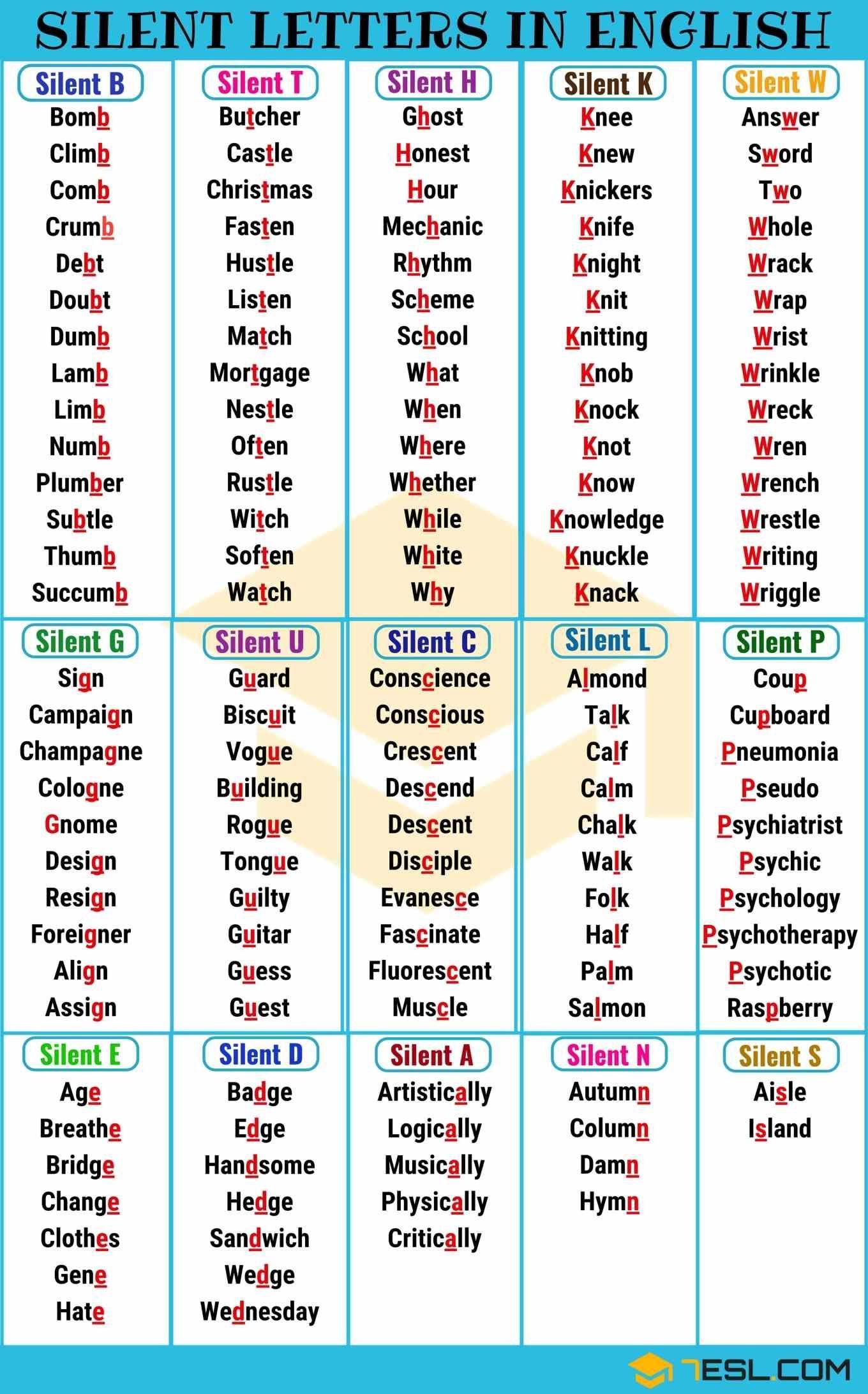When practicing speaking English it can be confusing for language learners to find that certain words have a silent letter that shouldn’t be used. Here we look at some of the most common examples.

When teaching English to non-native speakers the presence of silent letters can be a cause of great confusion among students and teachers alike. For the learner it can be frustrating to find that the written form of the word they have just mastered is actually spoken without using all the letters. There are a few basic rules when it comes to silent letters, but as is usually the case with English, there are often exceptions.
Basic rules for using silent letters in the English language:
-
Silent (B) Rule 1: The letter B is usually not pronounced after M at the end of a word e.g. comb, bomb, thumb, climb, tomb, lamb. Rule 2: B is usually not pronounced before the letter T e.g. doubt, doubtful, subtle, debt.
-
Silent (C) Rule 1: The letter C is usually not pronounced in the combination of SC e.g. scissors, ascent, fascinate, muscle. Rule 2: C is usually mute before the letters K and Q e.g. lock, block, puck, acknowledge. Aqua, acquit, acquiesce.
-
Silent (D): The letter D is silent when it appears before the letters N and G e.g. Wednesday, cadge, pledge, grudge.
-
Silent (E): If the letter E comes at the end of a word, it is generally not pronounced e.g. fore, table, before, write, give, hide.
-
Silent (G): The G letter is not pronounced when it comes before N in a word e.g. design, foreign, sign, gnash, align. Exceptions: magnet, igneous, cognitive, signature.
-
Silent (GH): GH is not pronounced when it comes after a vowel in a word e.g. high, light, thought, through, alight. Exceptions: GH is pronounced separately in compound words e.g. doghouse, bighead, foghorn.
-
Silent (H) Rule 1: The letter H is usually silent when it appears after W e.g. why, what, when, weather, where. Exceptions: whose, whosoever, who, whoever, whole. Rule 2: H is sometimes mute at the beginning of a word e.g. hour, honest, honour, heir.
-
Silent (K): The letter K is always silent when it precedes the letter N in a word e.g. know, knock, knife, knight, knowledge.
-
Silent (L): The letter L is usually not pronounced after the vowels: A, O and U e.g. calf, half, palm, would, should, could, folk, yolk.
-
Silent (N): The letter N is not pronounced when it comes after M at the end of a word e.g. column, damn, solemn, autumn.
-
Silent (P): The letter P is not pronounced at the beginning of many words using the combinations PS, PT and PN e.g. psalm, psychology, pterodactyl, pneumonia, pneumatic.
-
Silent (S): The letter S is not pronounced before L in some words e.g. aisle, island, isle, islet.
-
Silent (U): The letter U is not pronounced when it comes after G and before a vowel in a word e.g. guide, guest, guard, guess, guano.
-
Silent (W): The letter W is not pronounced at the beginning of a word when it is before the letter R e.g. write, wrest, wrong, wrack, wrap.
Are you interested in teaching English as a foreign language?
Get your TESOL certification with ITTT.
Register now & get certified to teach english abroad!


